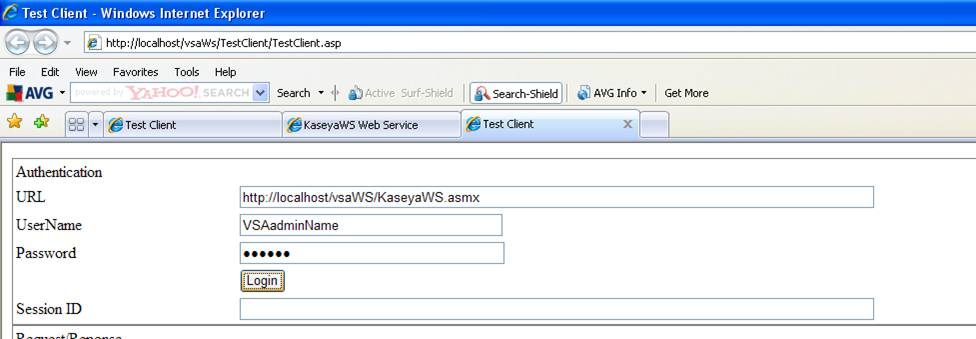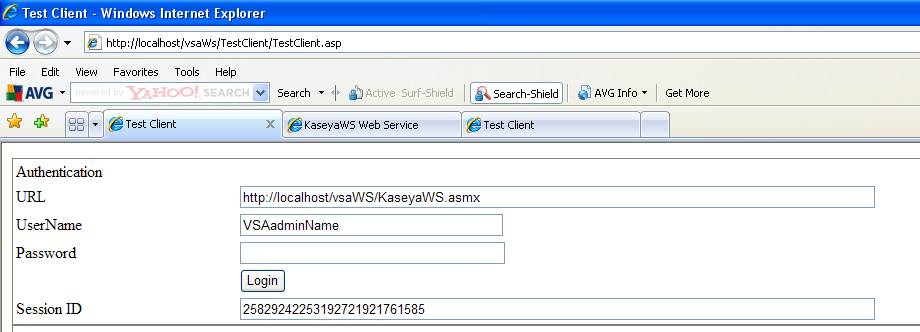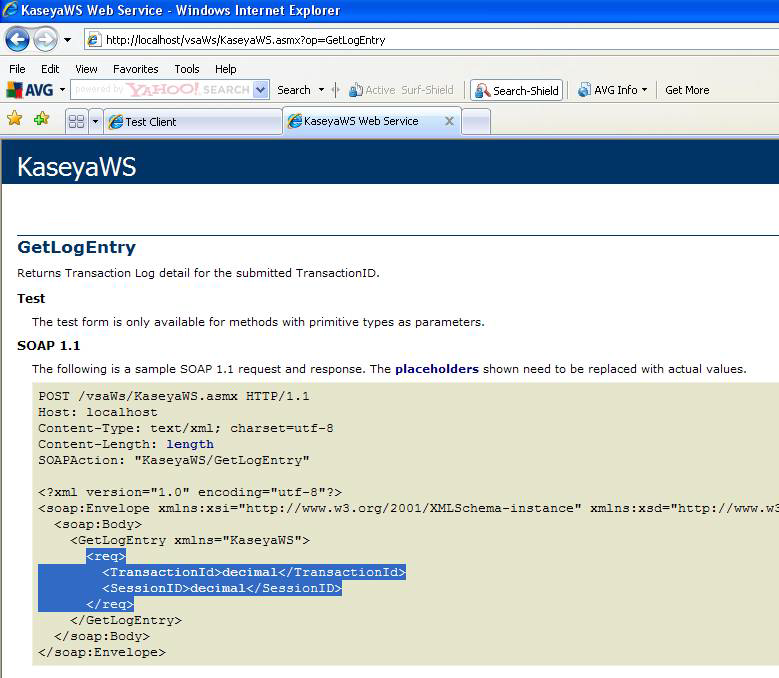VSA API Web Service Sample Client - ASP Page
A test client ASP page is also distributed with the VSA API Web Service to help you familiarize yourself with the various API operations. You can use it to see how the ASP client was constructed and incorporate any part of its code into your own application. Users can browse to the actual /vsaWS/KaseyaWS.asmx page of any Kserver, select a web method and copy and paste the exact XML SOAP request structure specified in the WSDL.
Authentication is in its own frame at the top of the page. The sessionID from a successful authentication is exposed and can be copied and pasted in subsequent XML requests.
Note: This page does not automatically incorporate the displayed sessionID into subsequent request statements like the C# GUI Test Client does.
Example 1: Authentication
- Enter a valid VSA administrator UserName and Password and click Login.

The Session ID textbox is populated with the session ID generated by your logon. You will need to copy and paste this session ID into subsequent XML requests.

Example 2 - Creating a Get Request
- In a second browser window, use the
/vsaWS/KaseyaWS.asmxpage to select a method, such as GetLogEntry.
- Each method displays the XML SOAP structure for that method's request. Copy just the portion of the method's request structure that starts with
<req>and ends with</req>.
- Paste the request structure into the Request pane of the
TestClient.asppage. Enter the name of the method in the Web Method Name field. Replace the placeholderdecimalwith thesessionIDstring you obtained during authentication. Replace any other placeholder content with valid data as required. Then click the Send button.Note: The
<BrowserIP></BrowserIP>element in any method can be ignored. The <BrowserIP>element helps to provide single-signon coordination with the VSA, and can be ignored in a testing environment where single-signon is not the focus.
The results display in the Response pane.
Topic 4785: Send Feedback. Download a PDF of this online book from the first topic in the table of contents.